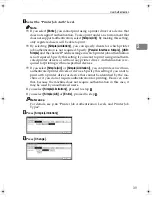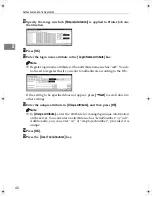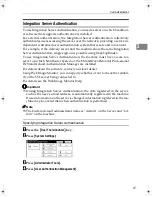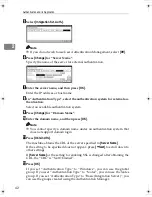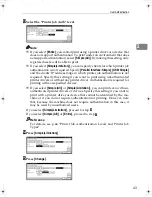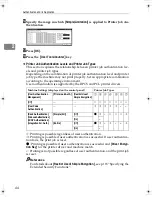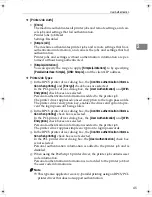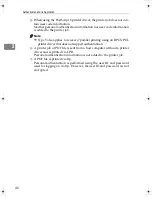
User Authentication
31
2
Windows Authentication
Specify this authentication when using the Windows domain controller to au-
thenticate users who have their accounts on the directory server. Users cannot
be authenticated if they do not have their accounts in the directory server. Under
Windows authentication, you can specify the access limit for each group regis-
tered in the directory server. The address book stored in the directory server can
be registered to the machine, enabling user authentication without first using the
machine to register individual settings in the address book. If you can obtain
user information, the sender’s address (From:) is fixed to prevent unauthorized
access when sending e-mails under the scanner function.
• If global groups have been registered under Windows server, you can limit
the use of functions for each global group.
• You need to create global groups in the Windows server in advance and reg-
ister in each group the users to be authenticated.
• You also need to register in the machine the functions available to the global
group members.
• Create global groups in the machine by entering the names of the global
groups registered in the Windows Server. (Keep in mind that group names
are case sensitive.) Then specify the machine functions available to each
group.
• If global groups are not specified, users can use the available functions spec-
ified in
[
*Default Group
]
. If global groups are specified, users not registered in
global groups can use the available functions specified in
[
*Default Group
]
. By
default, all functions are available to
[
*Default Group
]
members. Specify the
limitation on available functions according to user needs.
Important
❒
During Windows Authentication, data registered in the directory server, such
as the user’s e-mail address, is automatically registered in the machine. If user
information on the server is changed, information registered in the machine
may be overwritten when authentication is performed.
❖
Operational Requirements for Windows Authentication
• To specify Windows authentication, the following requirements must be
met:
• The optional printer function or HDD must be installed.
• A domain controller has been set up in a designated domain.
• This function is supported by the operating systems listed below. NTLM
authentication is used for Windows authentication. To obtain user infor-
mation when running Active Directory, use LDAP. If SSL is being used,
this requires a version of Windows that supports TLS v1, SSL v2, or SSL v3.
• Windows NT 4.0 Server
• Windows 2000 Server
• Windows Server 2003
D0086951_RussianC45-EN.book Page 31 Wednesday, May 31, 2006 11:45 AM























